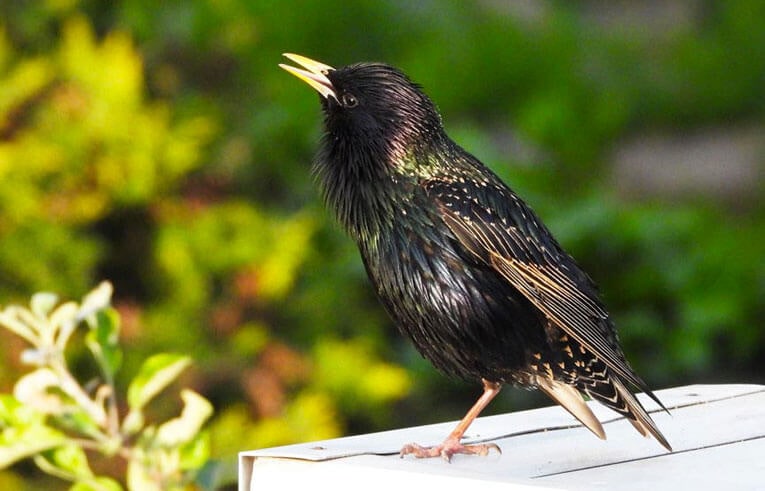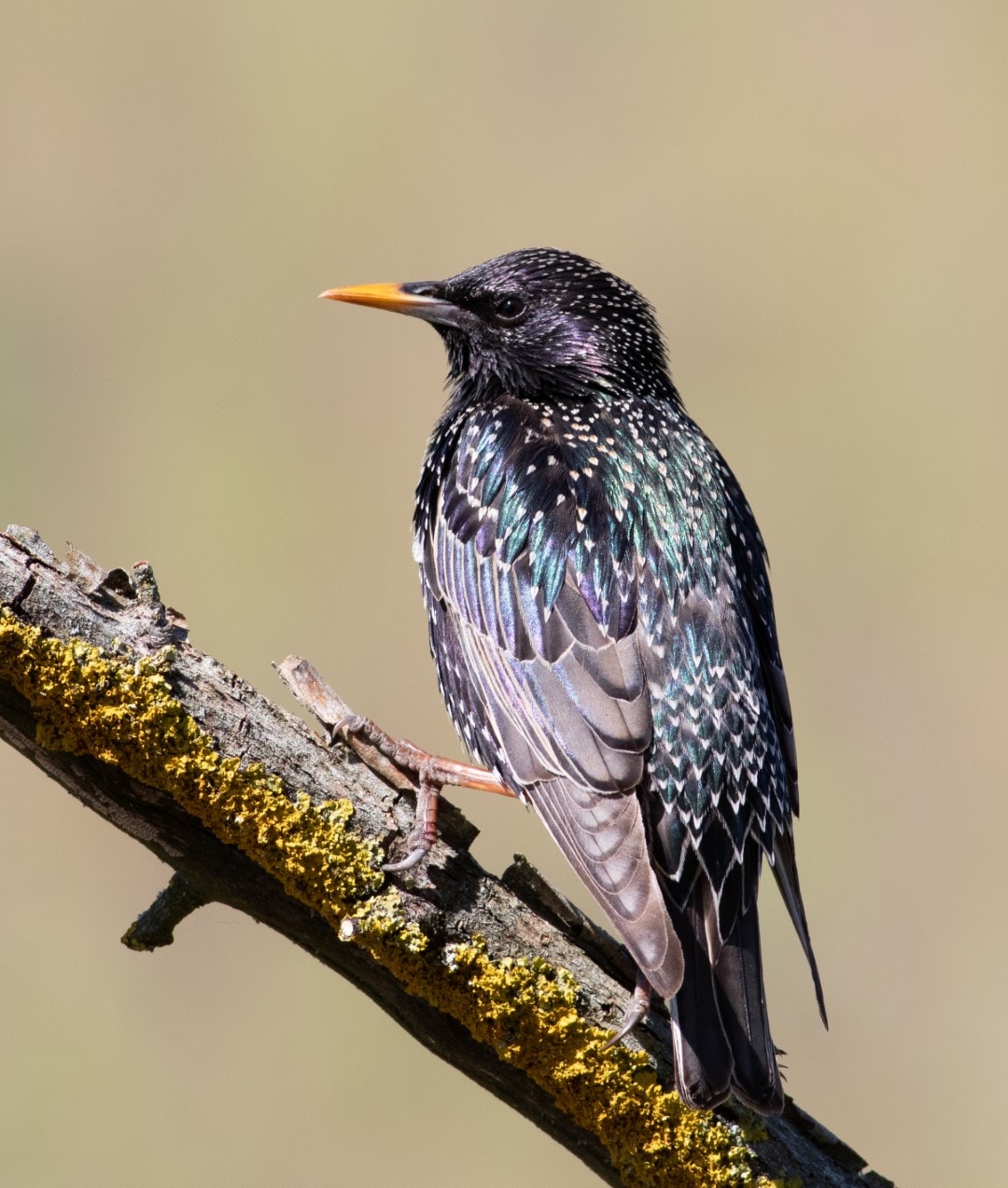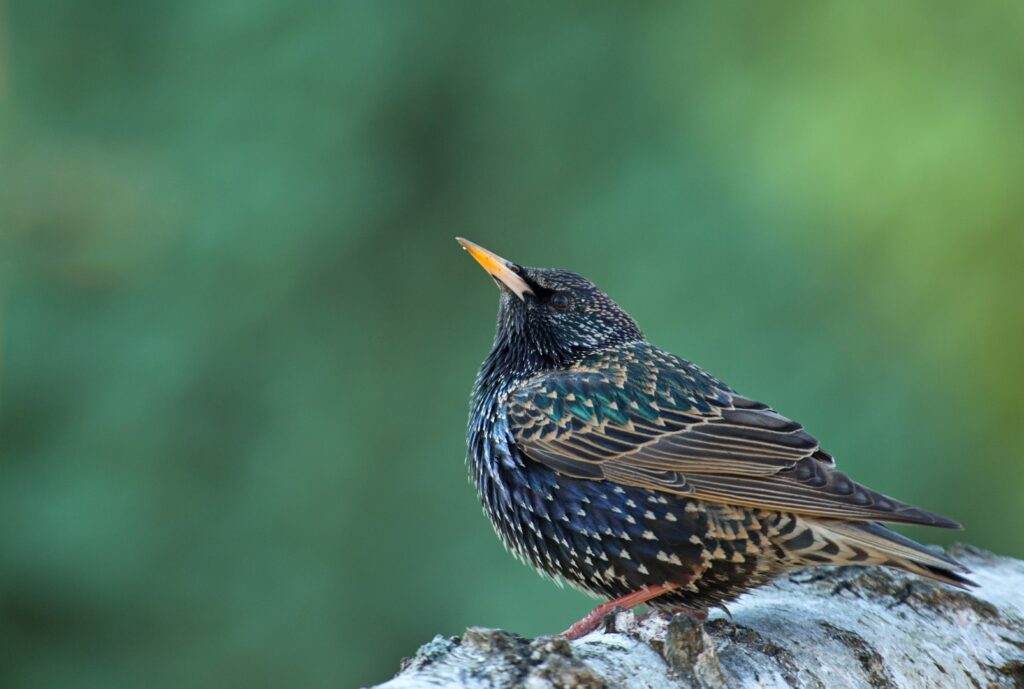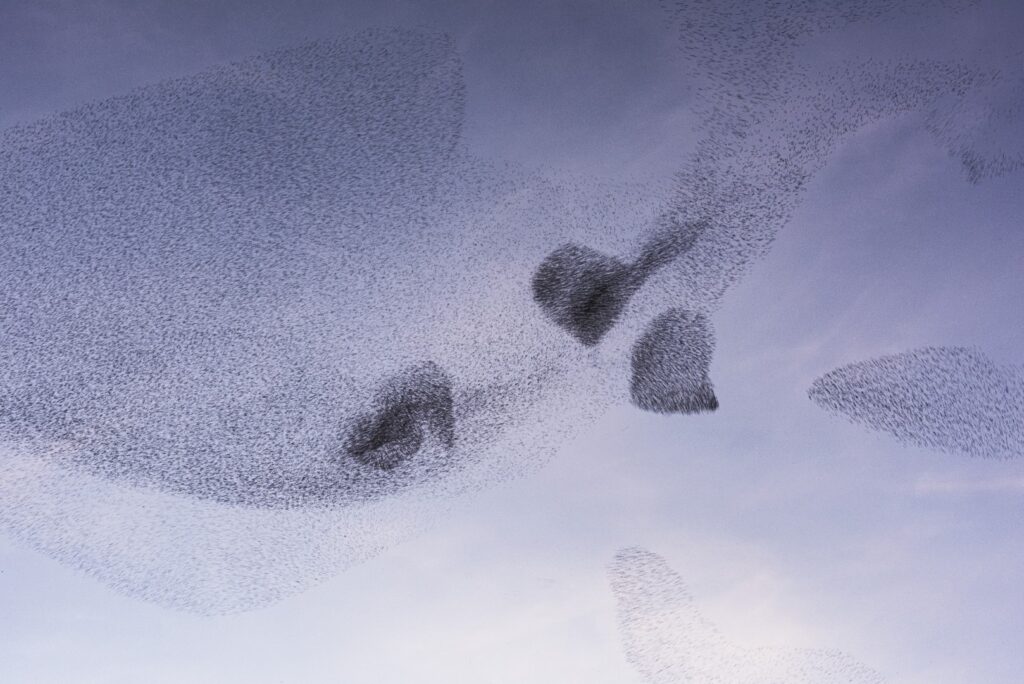Discover the Common Starling
The Common Starling (Sturnus vulgaris), a bird known for its iridescent plumage and remarkable mimicry skills, is a fascinating species found across a wide range of habitats worldwide. This page delves into the life of the Common Starling, exploring its behaviors, distribution, and the challenges it faces.
Identification of the Common Starling
Physical Description
Common Starlings are medium-sized birds, typically 19-22 cm in length and weighing 60-90 grams. They possess a short tail, pointed wings, and a sharp beak. Their most distinctive feature is their shiny, speckled plumage, which varies from black to green and purple iridescence.
Differences Between the Sexes
Males and females are similar in appearance, but males usually have a slightly more iridescent sheen and a longer base to the beak.
Plumage and Seasonal Changes
Starlings undergo a transformation in plumage throughout the year. In winter, their feathers gain white tips, giving them a speckled appearance. By summer, the plumage darkens, and the speckles fade as the feathers wear down.
Habitat and Distribution
Common Starlings are highly adaptable and can thrive in a variety of environments, from rural farmlands to urban areas. Originally native to Eurasia, they have been introduced to Australia, New Zealand, South Africa, and North America, where they are now widespread.


Behavior and Lifestyle
Feeding
Starlings are omnivorous, feeding on a wide range of invertebrates, fruits, and seeds. They are known to forage in flocks, often alongside other bird species.
Social Behavior
Starlings are highly social birds, especially in autumn and winter when they form large flocks. These flocks can create spectacular aerial displays, known as murmurations, before they roost for the night.
Migration
While some populations are resident, others migrate from colder regions to warmer climates during the winter.
Reproduction
The breeding season for starlings is from March to June. They nest in cavities, often competing with native birds for nesting sites. A typical clutch contains 4-6 eggs, and both parents participate in feeding the young.
Conservation and Status
In some regions, Common Starlings are considered pests due to their impact on agriculture and native species. However, their population has been declining in parts of their native range, raising conservation concerns.


FAQ on the Common Starling
Can Common Starlings really mimic other sounds?
Yes, Common Starlings are excellent mimics and can replicate a variety of sounds, including other bird calls, car alarms, and human-made noises. This ability is most pronounced in males trying to attract mates.
Why do starlings form murmurations?
Murmurations, which are massive, swirling flocks of starlings, serve several purposes. They are believed to be a defense mechanism against predators, a method for warming up during cold evenings, and a way for starlings to communicate roosting sites and feeding grounds.
How can I distinguish a Common Starling from other black birds?
Common Starlings are unique in their iridescent plumage, which can appear purple, green, or blue in the sunlight. Their short tails, pointed wings, and the seasonal variation in their speckled feathers also help distinguish them from other species.
Are Common Starlings harmful to native bird species?
In non-native regions, such as North America, Common Starlings can compete aggressively with native birds for nesting sites and food resources, sometimes leading to declines in native bird populations.
What is the lifespan of a Common Starling?
In the wild, Common Starlings typically live for about 2-3 years, although they can live longer than 10 years in some cases.
How do Common Starlings impact agriculture and ecosystems?
While they can help control insect pests, their feeding habits can also damage crops, and their large flocks can cause significant noise and mess. In ecosystems where they are not native, they may disrupt local biodiversity.
What can be done to manage Common Starling populations in non-native regions?
Management strategies include habitat modification, exclusion techniques, and in some areas, population control measures. However, it’s important that any action is balanced with humane treatment and consideration for the overall ecosystem.
Can I keep a Common Starling as a pet?
Keeping wild birds as pets is generally not recommended and is illegal in many places without proper permits. Starlings require complex social interaction, a varied diet, and ample space for flight, which are difficult to provide in a home setting.
How do I attract Common Starlings to my garden?
Providing food such as suet, mealworms, and fruit can attract them. However, be aware that attracting starlings might also discourage smaller birds, as starlings can be quite dominant at feeders.
How to Help the Common Starling
Promoting conservation efforts to preserve natural habitats and providing nesting boxes can help support starling populations, especially where numbers are declining.
The risks associated with the common starling
The common starling is a particularly adaptable species, which means that its populations can quickly become invasive. In agricultural environments, starlings, which live in large colonies, eat large amounts of animal feed. Livestock owners find them particularly undesirable due to their white droppings, which also contaminate tons of food. In addition, despite their plump shape, these birds can penetrate buildings by sneaking into holes with diameters of only 2.5 cm. Bird Solution offers bird control products to keep common starlings and other unwanted species away.

